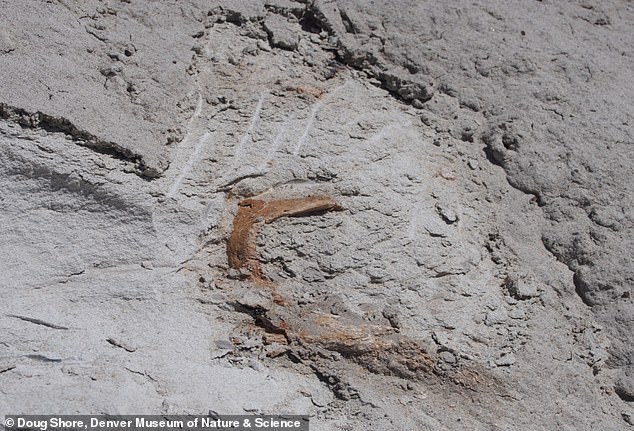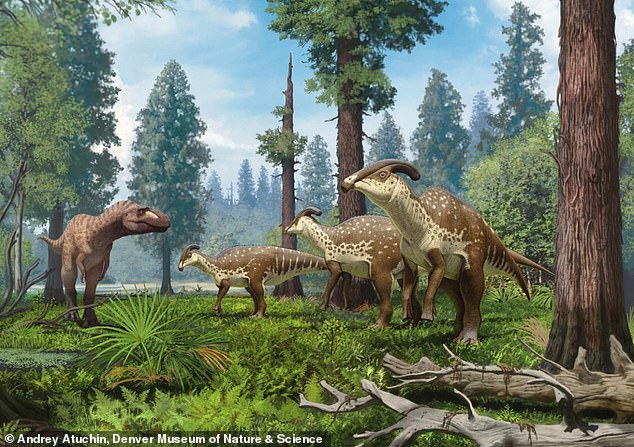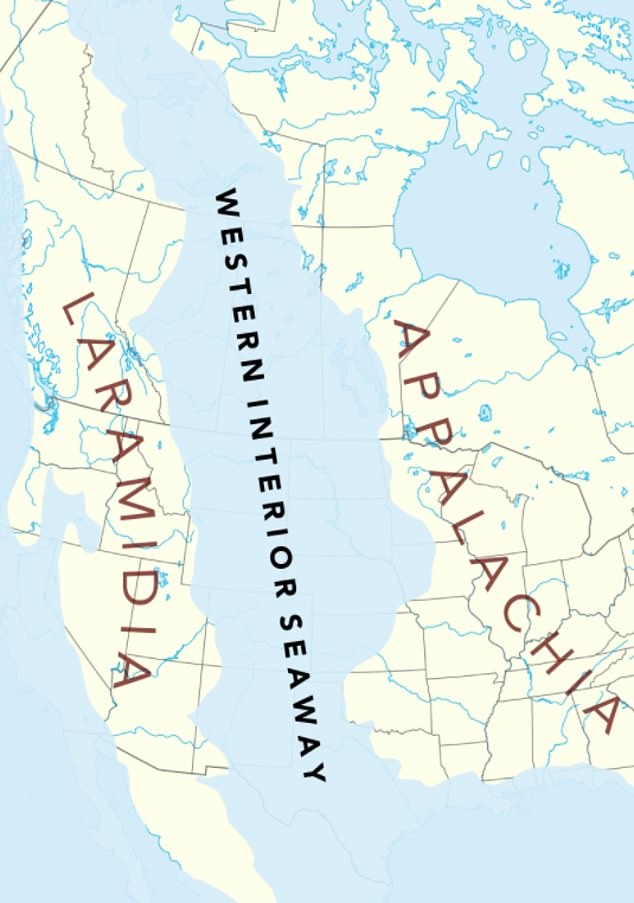
A ‘Wonderfully Preserved’ skull of a crested dinosaur found in New Mexico
Scientists have discovered a “ nicely preserved ” skull of a herbivorous New Mexico dinosaur species, known for its strange head decoration.
The skull belongs to the iconic dinosaur Parasaurolophus, which lived during the late Cretaceous period, from about 76.5 million to 73 million years ago.
Parasaurolophus was a herbivorous reptile that had trumpet-like nasal passages that breathed air into them through a so-called tube on its head.
This particular skull belongs to a specific species of the genus Parasaurolophus – Parasaurolophus cyrtocristatus.
The newly detected specimen was supposed to be about 20 feet (6.1 m) long and about 7.5 feet (2.3 m) long at the hip in its day.
Despite the highly conformation of the specimen, the sample details show that the crest is shaped much like the tops of other duck-billed dinosaurs.

Reconstruction of life to the head of Parasaurolophus cyrtocristatus based on newly discovered remains
Parasaurolophus lived in prolific and subtropical plains in one of two ancient lands that once made up North America, separated by a 2,000-mile stretch of water.
It lived with other duckbill dinosaurs, horned dinosaurs, and early dinosaurs along with many emerging modern groups of crocodiles, turtles, and plants.
“My jaw fell when I first saw the fossil,” said Professor Terry Gates, a paleontologist from North Carolina State University.
I’ve been waiting for nearly 20 years to see a sample of this quality.
Imagine your nose growing over your face, three feet behind your head, and then turning around to attach above your eyes.
“Parasaurolophus breathes through eight feet of tubes before oxygen reaches its head.”
The partial skull was discovered in 2017 by Irene Speer of the Smithsonian Institution of Tropical Research, while exploring the badlands of northwest New Mexico, but is now only described by scientists.
It is located deep in Bisti / De-Na-Zin Wilderness in New Mexico, and only a small portion of the skull was visible on a steep sandstone slope.
“The preservation of this new skull is astonishing,” said Joe Search, curator of dinosaurs at the Denver Museum of Nature and Science. “He finally revealed in detail the bones that make up the crest of this amazing dinosaur that almost every child is obsessed with with dinosaurs knows.” .

A new skull of Parasaurolophus as originally displayed in the Badlands of New Mexico. The ‘magnificent’ preservation of the new skull gives paleontologists the first opportunity to know definitively how such a strange structure grew on this dinosaur.

Bisti / De-Na-Zin Wilderness is a wilderness area of 45,000 acres (18,000 ha) located in San Juan County, New Mexico, USA.
This only reinforces the importance of protecting our public lands for the sake of scientific discoveries.
Museum volunteers led by Sertich were surprised to find the intact top where they carefully carved the sample from the sandstone.
Among the most famous dinosaurs, Parasaurolophus wore an elongated tube-like emblem on its head that contained an internal network of bronchi.
David Evans, the Temerty Chair in Vertebrate Paleontology and Vice President of Natural History at the Royal Ontario Museum, said: “ Over the past 100 years, ideas for the exaggerated tube logo have ranged from diving to super sniffers.

Reconstructing the life of the Parasaurolophus group encountered by dinosaurs in the subtropical forests of New Mexico 75 million years ago
“But after decades of study, we now believe that these signs act primarily as audio resonators and visual displays used to communicate within their own species.”
The abundant bone fragments at the site indicate that much of the skeleton may have been preserved at one time on an ancient sand bar, but only the partial skull, part of the lower jaw, and a handful of ribs survived wear.
“This specimen is really cool to preserve,” said Evans, who has worked on Parasaurolophus for nearly two decades.
It has answered long-standing questions about how the summit was built and about the health of this particular species. For me, this fossil is very interesting.
Today, the badlands of northwest New Mexico are dry and sparsely vegetated, a dramatic contrast to the fertile lowland plains preserved in their rocks that would have been the natural habitat of Parasurolophus.
Seventy-five million years ago, when Parasurolophus lived in the region, North America was divided into two terrestrial parts by the inland-western sea route.
This shallow stretch of water extended from the Gulf of Mexico to the Arctic Ocean and divided the continent into two terrestrial parts – East America, or Appalachia, and West America, or Laramidia – for several million years.

The creation of the sea lane caused the formation of a long and thin land mass known as Laramidia to the west and the wider, rectangular Appalachia to the east.
Laramedia (to the west) extended from today’s Alaska to central Mexico, where it hosted several episodes of mountain building in the early stages of building the present Rocky Mountains.
These mountain-building events have helped preserve the diverse dinosaur ecosystems along its eastern sides, some of which are among the best preserved and most enduring systems anywhere on Earth.
Thanks to various fossil discoveries, three Parasaurolophus species are currently recognized, ranging from 77 million to 73.5 million years ago.
The new skull belonged to P. cyrtocristatus, previously known from a single specimen collected in the same area of New Mexico in 1923 by the legendary American paleontologist Charles H. Sternberg.
The other two known species of Parasaurolophus are P. walkeri (remains of which were found in Alberta in Canada) and P. tubicen (remains of smaller rocks in New Mexico).
Professor Gates said: “The original species of Parasaurolophus, P. walkeri, dates from 1921.”
Our Parasaurolophus [P. cyrtocristatus] It is a different species, it was originally described in 1960 (but was found many years before it was named).
“So this is the first P. cyrtocristatus that was found and described in 60 years.”
P. cyrtocristatus was the smallest of the three species – overall, the newly described specimen is about 75 percent the size of the original P. walkeri found in 1921.
P. cyrtocristatus also has a curved crest. The other two species have long tops with only a slight curvature.
According to the researchers, perhaps the shorter and more curved apex of P. cyrtocristatus is related to its immaturity at death.
For decades, the Parasaurolophus family tree developed the two straight-headed and long-headed species (P. walkeri of Alberta and P. years.
This new analysis, combined with information from other Parasaurolophus discoveries from southern Utah, suggests for the first time that all southern species from New Mexico and Utah may be more closely related than their northern relative.
This matches the patterns observed in other dinosaur groups of the same age, including the horned dinosaurs.
“This specimen is a wonderful example of amazing creatures that came from a single ancestor,” said Search.
The sample is further detailed in a paper published in the journal Berg.
